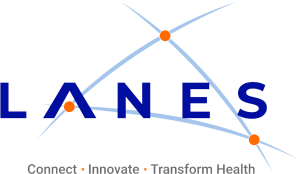In today’s healthcare landscape, the sheer volume of electronic health records (EHRs) that providers must review during patient visits has become overwhelming, burying potential critical information.
Just consider the story of patient Alex (a pseudonym), who was treated at Los Angeles General Medical Center. When Alex was rushed into the emergency room, signs pointed to a neurological issue, but something didn’t quite add up. The team dug into Alex’s medical history through their health information organization and discovered the patient had recently undergone a cardiac surgery at a different hospital; their post-surgical issues had merely mimicked a neurological challenge. This discovery allowed the care team to quickly switch gears and administer accurate care from the appropriate experts, saving the patient from needless testing and waiting.
When the stakes are high, requiring accurate, complete, and quality treatment, healthcare providers face significant challenges in managing the influx of data. To minimize disruption and enhance efficiency, it’s essential to adopt data sharing tools designed with the providers’ needs at the forefront.
Designing Provider-Centric Data Sharing Tools
1. Provider-Focused Design
Data sharing tools should be created with a deep understanding of the healthcare provider’s workflow. This means integrating features that simplify data access, reduce unnecessary steps, and present information in a user-friendly manner. Tools that are intuitive and seamlessly integrated into existing systems can alleviate the burden on providers, allowing them to focus more on patient care and less on navigating complex interfaces.
2. Actionable Insights
The data shared must be actionable and delivered at the right time. Providers need tools that not only present data but also help interpret it. By offering actionable insights, these tools enable providers to make informed decisions swiftly. This is particularly critical in high-pressure environments where time is of the essence. For instance, predictive analytics can alert providers to potential issues before they escalate, facilitating proactive care.
3. Timely Information Delivery
Delivering information at the appropriate time is crucial. Data sharing tools should be equipped with intelligent systems that understand when a piece of information is needed and by whom. For example, during a patient visit, a provider might need immediate access to recent lab results or medication history. By ensuring timely delivery, these tools help avoid the need for providers to sift through extensive records during consultations, enhancing both efficiency and patient experience.
Leveraging the Entire Care Team
1. Collaborative Decision-Making
The entire care team, including nurses, medical assistance, and specialists, play a pivotal role in patient care. Data sharing tools should facilitate collaborative decision-making by ensuring that relevant information is accessible to all members of the care team. This approach not only improves patient outcomes but also distributes the workload more evenly among the team.
2. Intelligent Information Distribution
Effective data sharing tools should be intelligent enough to determine who needs specific information and when. For instance, a nurse may need access to post-operative care instructions, while a pharmacist at a health plan or IPA would require detailed medication histories. By tailoring information delivery to the needs of each team member, these tools can prevent information overload and ensure that each member of the care team is equipped with the data they need to perform their roles effectively.
3. Enhancing Communication and Coordination
Data sharing tools should enhance communication and coordination among care team members. Features such as secure messaging, shared dashboards, and real-time updates can foster a more integrated approach to patient care. When team members are well-informed and can communicate effortlessly, the risk of errors decreases, and the overall quality of care improves.
Decision Support Tools: A Key Component
1. Enhancing Clinical Decision-Making
Decision support tools integrated into data sharing platforms can significantly aid providers by offering evidence-based recommendations. These tools analyze vast amounts of patient data and clinical guidelines to suggest the best course of action. This support is invaluable, especially in complex cases where the optimal treatment path may not be immediately clear.
2. Reducing Provider Burdon
By providing concise summaries and highlighting critical information, decision support tools help reduce the cognitive load on providers. Instead of manually searching through extensive records, providers can rely on these tools to bring relevant information to their attention, allowing for faster and more accurate decision-making.
3. Improving Patient Outcomes
When providers have access to advanced decision support tools, they are better equipped to make decisions that improve patient outcomes. These tools can identify potential drug interactions, recommend alternative therapies, and even predict patient responses to certain treatments. This level of support ensures that providers can offer personalized, high-quality care.
As healthcare providers grapple with the increasing demands of managing EHRs, it is crucial to adopt data sharing tools that minimize disruption and enhance efficiency. By focusing on provider-centric design, delivering actionable insights at the right time, and leveraging the entire care team, these tools can transform data from a burden into a valuable asset. Intelligent, well-designed data sharing solutions have the potential to significantly improve the way healthcare providers deliver care, ultimately leading to better patient outcomes and a more sustainable healthcare system as demonstrated by Los Angeles General Medical Center and their care of patient Alex.
Learn more about LANES capabilities.

